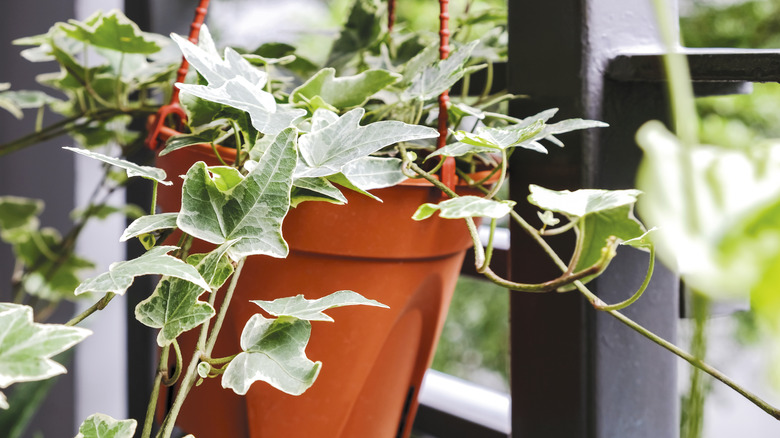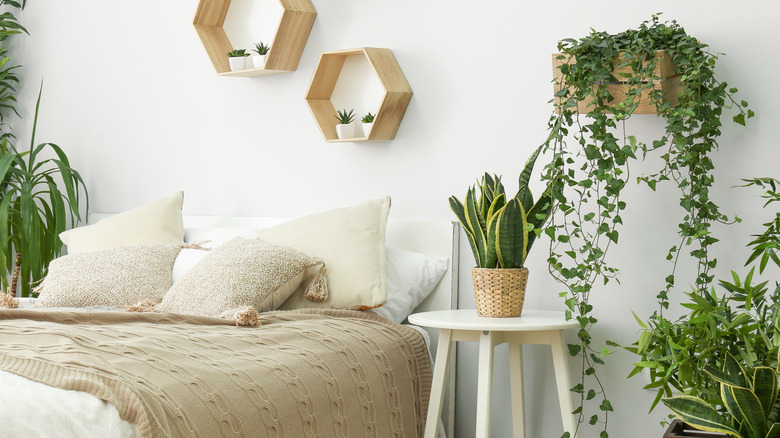Think Twice Before Fertilizing Ivy In The Winter. Here's Why
Although most people attempt to grow ivy successfully outdoors, it's also possible to grow these plants in pots indoors. Because it's so easy to care for and can help purify the air in your home, you may even prefer trying to grow it indoors. You don't have many extra tasks you need to do with this houseplant in the wintertime. In fact, you can take a break from fertilizing the ivy during the colder months, as it needs to have a period where it can go into dormancy. If you provide fertilizer in the winter, the ivy could become stressed, leading to problems with insects or disease.
Your ivy plants don't need fertilizer during dormancy because this is not their active growing time. Fertilizers add nutrients to the soil, allowing the plant to grow. If your ivy creates flowers, for example, the fertilizer is important for giving the plants the extra energy required for flowering. However, if you apply fertilizer too often or at a time when the plant doesn't need it, you could burn the root system, which could harm it when the growing season comes back around.
What happens when an indoors ivy plant goes dormant for the winter?
Even indoors, ivy plants have less access to daylight during shorter winter days. So, they'll adopt a natural process to conserve energy at this time. When caring for ivy in the winter time indoors, you may want to provide only indirect sunlight to help it maintain a low-growth period. Another environmental condition that affects the dormancy of house plants in the winter is the level of humidity in the air. Most homes have lower humidity levels during cold temperatures outdoors, often below 25% when temperatures are 0 degrees or lower — while they can have humidity in the range of 30% to 50% during summer inside the house.
Because of these environmental conditions, even indoors, the indoor ivy has a period without active growth during the colder months. This means it doesn't need fertilizer like it does during spring and summer. Unless your plants have grow lights and supplemental humidity during the wintertime, adding fertilizer to the pots could cause a dangerous buildup of salts that could lead to their death.
Best way to care for your indoor ivy plants during winter time
Even though there is no need to add fertilizer to your potted ivy plant indoors during the colder months, you can take steps to keep your ivy healthier as it goes into dormancy. Start by keeping the plant moist during winter, as your house has far lower humidity levels during this time of the year than it does during the growing season. Taking the time to occasionally mist the leaves with water keeps it healthier and helps it to resist pests. If you are bringing your ivy indoors for the winter, it's best to place it in a location where it will receive little daylight. You may want to apply less direct water into the soil to help keep growth minimal.
If you have a temptation to prune the ivy during its time of slower growth, you should not do this. You want to prune during times of more vigorous growth when you can see which parts of the ivy have too long stems or don't have the density of the leaves that they should. You can see damaged leaves during the growing season, making it easier to trim those areas. Additionally, you probably want to fertilize the ivy after pruning it, encouraging vigorous growth, and you don't want to add the fertilizer during winter time.


